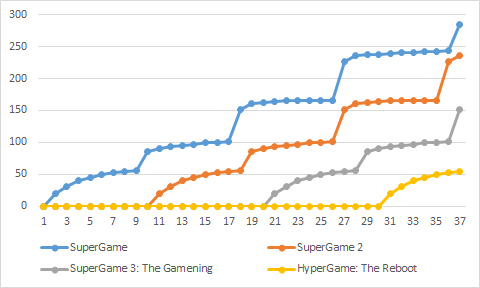Not at all. The concept seems to trip up so many people in this thread that I guess a chart could help.
Basically, games on Steam often have a pattern of some significant sales at launch, then a dropoff, then significant sales the first time the game is ~30% off (and some additional full-price sales after that) then again at 50%, and 75%, and so on.
Now, if you take a game and its 3 sequels, and assume that
they all sell exactly as well as each other, and that they are released in 10 month intervals with a sale happening roughly every 9 months, and fill in some made-up-but-sort-of-realistic numbers, then then the sales pattern will look like this:
If we now look purely at a snapshot in month 37 then it will seem like there is a heavy drop-off for the sequels (the most recent game sold less than 20% of the first one!) even though we filled in the
exact same sales pattern.
Of course, that's not to say that there will never be a sales drop for sequels -- obviously that does occur -- just that only looking at current sales without taking the release date and pricing history into account is inconclusive on a long-tail platform.

